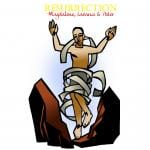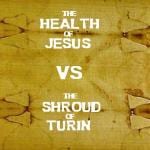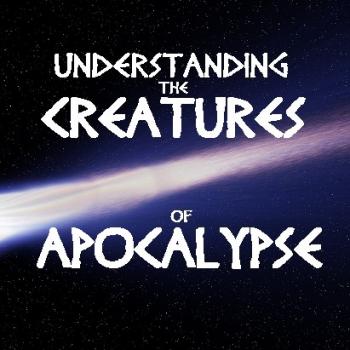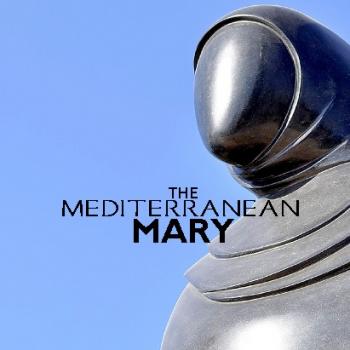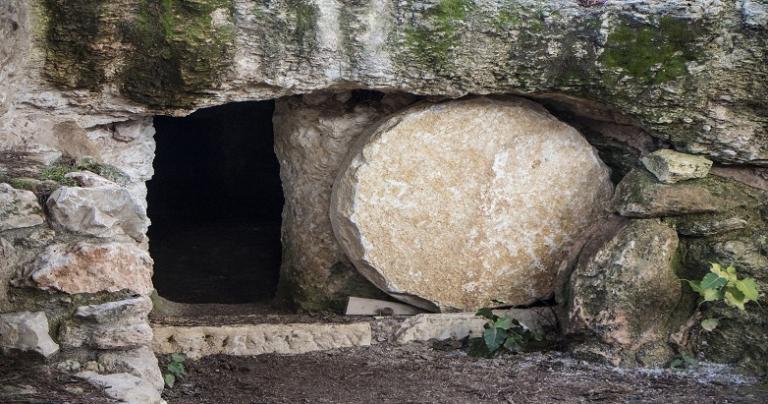
Magdalene, as presented in “John,” belongs to the highest status as the one officially commissioned as of the Risen Jesus.
Magdalene was special to “John.” But given the Mediterranean cultural world in which the Fourth Gospel originated, it may be difficult to see why any woman would be deemed special. The life of first century Israelite peasants was brutal and brief—even more so for women, people without voice save for that of the significant males of her life. Nothing like human rights, Affirmative Action laws, and protections against discrimination existed in the Biblical world.
So why then are Mary Magdalene (John 20:11-18) and other women (John 4:49; 11:27; 12:3) featured so prominently in the Fourth Gospel? If our male ancestors in the faith were so patriarchal, how could it be that they were assisted in such crucial ways—understanding the very heart of the Gospel!—by women? Without the Magdalene, commissioned by the Risen Jesus, could these males have understood the empty tomb?
Questions About Magdalene in “John”
The Fourth Gospel called “John” provides a problematic story in John 20:11-18, no matter how dramatically moving it is. Scholars such as Fr. Jerome Neyrey and John Pilch ask—only the Gospel called “John” has the risen Jesus appearing individually to Mary Magdalene, but why? Does Magdalene being a woman affect how this story is to be read? What in the world does the Johannine Jesus mean by telling her that he has “not yet ascended”?
“John” uniquely reports that the risen Jesus appeared first to Mary Magdalene in an individual-type visionary experience. This story was not written as a jigsaw puzzle piece to be fitted together with other Gospel accounts into some kind of biographical narrative “super-text.” Rather, it was written as an insider document for Johannine believers, members of the Johannine Jesus group, an anti-society. Understanding it then depends on inquiring about its Johannine context—in other words, what did it mean for this community?
Like the Other Gospels, but…
All four canonical gospels narrate that certain women go to the tomb to anoint Jesus’ body on the first day of the week, find it empty, and witness a proclamation about the risen Jesus from an other-than-human person or persons (Mark 16:1-8; Matthew 28:1-8; Luke 24:1-8). But in contrast “John,” the so-called “Maverick Gospel,” offers big differences and cultural anomalies.
Magdalene Alone in Public
According to “John,” Mary Magdalene arrives at the tomb unaccompanied by any other women (John 20:1-2, 11). She finds the tomb empty and runs to tell Peter and Lazarus (John 20:1-2, cf. 11:3-5). But After some time, Mary returns to the tomb. Apparently by this point Peter and the Beloved Disciple have left (20:10). Shockingly, she through these trips to and from the tomb, the Magdalene, a woman, is alone in public! Culturally speaking, for any Mediterranean or Middle Eastern woman to be out in public unchaperoned is extremely unusual.
Why would the Fourth Gospel depict the Magdalene coming to the tomb alone? Neyrey and Pilch suggest that this could be a Johannine “editorial technique” used to highlight a specific character’s importance. By highlighting them, these important characters become “typical” figures, symbols who represent theological positions or traits that address pastoral problems experienced by the Johannine Jesus group. Pilch says that in the mind of the unknown, anonymous author we call “John,” Magdalene is such a “typical figure.”
Explaining Typical Characters
Nowhere does the Bible really present any of its characters as an historical photograph of some real, actual historical person. In fact, some biblical characters were not historical at all, but only symbolic characters, that is, ideas dressed up as persons. Examples abound in the mythic literature of Genesis 1—11.
But not all biblical characters are ideas dressed up as persons. Some characters are historical interpretations of real persons who once lived—these “historical representative” characters still are theological portraits, not photos or exact replicas of how they actually were.
All of the characters in the Fourth Gospel—including the Johannine Jesus!—are representative figures. They are employed and shaped to symbolize specific attitudes and themes. For example, the character Nathanael symbolizes the Johannine Jesus group member who is unmoved by outsider objections to its preaching about Jesus. Nathanael represents the one who “comes and sees” for himself as would “a true Israelite” (John 1:45-50)
More Typical Characters
Likewise the Samaritan Woman (John 4:4-42) represents the Samaritan believers who, following 700 years of fierce ethnic hatred with Israelites, joined the Johannine Jesus group some time in the latter half of the first century. The character and the story of her and Jesus at the well are a magnificent theological fiction written to justify treating Samaritan believers as insiders.
And the sighted blind man (John 9:1-41) represents the bitter experience of the Johannine anti-society rejected and dehumanized by the dominant society, Israel. His rejection from the synagogue was their story, the sad tale of the entire embittered Johannine Jesus group.
We have already seen that the character Martha represents the Johannine Jesus group that grieves for its suffering and deceased members. She represents the group that wonders, “If the risen Jesus conquered death, why do we still continue to die?”
Neyrey and Pilch agree that Mary Magdalene is yet another typical or symbolic character in “John.” Just how she is takes a bit of exploring…
Death as Process
The segment of John 20:11-18 opens with Mary weeping (20:11). She has returned to the garden where Jesus was buried. Distraught, the Magdalene stoops over the tomb, and what is described of it in John 20 demands that it must be some kind of arcosolium hewn from rock (20:11-12).
Next, the Magdalene has a vision of two other-than-human sky persons inside the tomb. One of these sky beings sits at the head of the slab where Jesus lay, while the other sits at the foot (20:11-12). These sky beings inquire why Mary is weeping. She answers that it is because Jesus’ body was stolen and she does not know where it is (cf. Matthew 28:13-15; 27:62-66). Therefore the dying-burial process has been interrupted.
In the ancient Mediterranean world of the Bible, death is not punctiliar event occurring at a definite and unextended point of time, as our Western death certificates demand. Rather, Mediterranean death, as in the Bible, is a process, a transition from one world to the next, from one mode of existence to another. Because the Magdalene suspects Jesus’ corpse was stolen (see John 20:2, 13, 15), this process has been interrupted. She must locate Jesus’ body in order to continue it.
Not Knowing vs Hopelessly Not Knowing
So far in the narrative, Mary Magdalene is just like Peter in that she cannot imagine the God of Israel interrupting the dying-burial process by way of resurrection. Like the inferior disciple Peter, Mary “does not know” and twice she admits this. Neyrey and Pilch explain that “not knowing” is a major theme in the Gospel called “John.”
Throughout the Fourth Gospel, when a character is in the state of “not knowing” about Jesus, it’s not the end of the world. In fact, it can even be a positive! This is because it offers the Johannine Jesus an opportunity in the narrative to bring those who don’t know into the light of knowing. Isn’t this what happened to the Samaritan woman at the well (4:7-26)? Isn’t this what happens with Thomas at the Farewell Dinner (14:5)?
But some characters think they know, but do not, and this is a serious problem in “John.” Early in the narrative we see such a character in Nicodemus, the Ruler of the Judaeans who comes to Jesus in the darkness of ignorance and leaves him in the night-dark, confused and ignorant. Note how the Johannine Jesus upbraids him (John 3:10). Note also those who hopelessly cannot know where Jesus is, or where he goes to (see 6:41-42; 7:26-28). As Neyrey and Pilch explain, while the ignorance of “not knowing” can be fixed, not being “in the know” is a major problem in “John.”
Confused Magdalene
Mary Magdalene responds to the two sky servants that “they” have taken Jesus’ body somewhere she doesn’t know (John 20:13). Then she turns, and in another vision, she sees Jesus!—yet fails to recognize him (20:14).
The risen and unrecognized Jesus addresses Mary as “Woman” and asks her, “Why are you weeping? Who are you looking for?” Mary thinks the one speaking to her in her vision is a gardener (20:15).
The Magdalene also believes that this “gardener” has stolen the body of Jesus. So she tells him, “Sir, if you carried him away, tell me where you laid him, and I will take him.”
The Commissioned Magdalene
That is when Jesus, the Good Shepherd, calls her by name (see John 10:3 and 20:16). Mary hears the voice of the Good Shepherd, and responds in Aramaic, Rabbouni, the literal translation of which is “My Great One.” But the unknown author of “John” says it means “Teacher.”
What happens next discloses something extraordinary about Jesus and conveys something very important concerning Mary—
John 20:17
Jesus said to her, “Stop holding on to me, for I have not yet ascended to the Father. But go to my brothers and tell them, ‘I am going to my Father and your Father, to my God and your God.’”
The Risen Jesus explains that his ascent to God in sky vault is not yet finished, therefore Mary shouldn’t touch him. But he directs the Magdalene to go and give good news about his ascent (3:13) to the disciples whom he has raised in social rank to being his brothers. With allusion to his prayer in the Farewell Dinner (see John 17:21), Jesus commissions Mary to tell them, “I am going to my Father and your Father, to my God and your God.”
Magdalene is Different in “John”
When comparing John 20:11-18 with the synoptic accounts of women at the tomb, interesting things come to light. Generally, the Synoptics fail to provide a coherent report—did the women see the Risen Jesus or not? Were they deputized as Jesus’ heralds to report a distinctive revelation to the Galilean disciples? Were they perceived by the men as heralds? Or are they just devices that carry the narrative forward? A lot is unclear.
Mary Magdalene in “John,” however, is featured quite differently. She is given a distinctive role to play, and she’s not just one woman of three. The Johannine Magdalene becomes the Herald of the Risen One. Clearly, the author of the Fourth Gospel was aware of the tradition of women at the tomb known also by the Synoptic authors. But he is retelling this story in order to address specific Johannine interests and concerns facing his Jesus group.
Magdalene Receives Special Revelation
Consider how back in the Johannine Jesus’ farewell discourse (John 13—17), he explained in a very cryptic manner how he would die and be glorified or lifted up (John 16:25). Nothing was clearly explained (John 16:17-18). Meanings were kept hidden and obfuscated. Indeed, the Johannine Jesus asserts that were he to be more direct and clear, the disciples would not be able to take it (John 16:12)!
How different and superior is the personal epiphany and revelation given to the Magdalene (John 20:17). The Risen Jesus tells her plainly, “I am ascending…” Mary Magdalene is thus depicted as enlightened, a special figure from the special time of clear understanding. Her revelation comes direct from the Vine, Jesus (John 15:5). The Magdalene is given revelation immediately, sustenance not filtered indirectly through the group or anyone else, just like branches receive from a vine (John 15:4-7).
Because a character’s standing in the Johannine Jesus group is established through his or her correct and special knowledge about Jesus, this demands that the Magdalene must possess an extraordinary status in the Fourth Gospel! The message she reports (John 20:18) is one of the most important in all the Gospels. And what a transformation!—Mary goes from panic and confusion (20:1-2, 11-15) to enlightened about Jesus ascending to the head of the cosmos and commissioned to inform his disciples thus.
Magdalene, the Deepest of Insiders
As recipient to a special revelation, the Magdalene also, just like Lazarus, is a “beloved disciple.” Because she received immediately from the Risen One revelation and commissioning, she is both enlightened and charismatic figure of the highest caliber. The Magdalene does not receive her knowledge about Jesus from a group or another individual—she gets it immediately from Jesus himself. Therefore, she is above those mentioned in John 20:29, ordinary believers who cannot see Jesus directly, but depend on Jesus group leaders and preachers to mediate this.
The Fourth Gospel sandwiches the reactions of disciples to the empty tomb in such a way that demands comparing Mary Magdalene with Peter and the Beloved Disciple. Whereas the two male disciples do not receive epiphany or revelation, Mary does. They will soon also, however (20:19-23). But the Magdalene was first.
The Risen Jesus makes Mary the deepest of insiders with insider-knowledge—the Magdalene is the typical character who represents this kind of Insider-believer, the one who is “in the know.” She knows where Jesus has gone (20:17).
Altered States of Consciousness
Back in the first century Jesus groups, followers of Jesus wondered: Where is Jesus now? Does he care about us and our suffering? There was no more important event for those followers of Jesus in the postapostolic generations than experiencing the Risen One. This happened within these communities regularly and routinely, but never so often as in the Johannine Jesus group which called itself “tekna Theou”—the Children of God (John 1:12-13).
But as in the Gospel story with the Magdalene, just like with Paul in “Acts,” whenever the Risen Jesus appeared, he was not immediately recognized. This is normal in experiencing altered states of consciousness (ASCs).
The Johannine Jesus group or “Children of God” were not unique in experiencing the Risen One via ASC experiences (Galatians 1:12; 2 Corinthians 12:2-4). Indeed, ancient Mediterranean culture, unlike resistant mainstream United States culture, was very open to such experiences. But what made the Johannine experience of these appearances so distinctive?
Distinctive Johannine Visions
Apparently, the Johannine anti-society held to a perspective quite different than the other Jesus groups. For them, Jesus was not just an Israelite holy man and prophet glorified and risen by God to be messiah and cosmic Lord, soon to return to inaugurate theocracy. Instead, the Johannine messianists believed that Jesus pre-existed his earthly life up in sky vault (John 1:1-18; 17:5), and had descended from there to be incarnated in Israel. Then this Sky Vault Man (John 1:51) ascended back up to the realm of God on top of the highest sky vault.
But following this first ascent, the Johannines, disinterested in a forthcoming theocracy, held that this Son of God descended again and again and could be experienced right now inside their ingroup. These “Children of God” frequently experienced Jesus’ continued appearances as they gathered. Jerome Neyrey and John Pilch explain that the document we call “The Gospel of John” is really the insider-story of these repeated descents. That community was an Easter people, indeed.
Women and the Johannine Anti-society
The Fourth Gospel presents three women receiving special revelations from Jesus—the Samaritan Woman (John 4:26), Martha (John 11:25-26), and the Magdalene (John 20:17). Neyrey and Pilch agree that always these revelations indicate that these three women are “insiders” in the Johannine Jesus group and intimates with Jesus.
Both the Samaritan Woman (John 4:39) and “Beloved Disciple” Martha (11:28) act as missionaries. But neither were commissioned to do this. Indeed, the Samaritan Woman was disobedient—the only person Jesus told her to bring to him was her husband (4:16), not the whole town! So both women were unofficial, un-commissioned heralds of Jesus. Still, these two women held high status in the Johannine Jesus group.
However the Magdalene was officially commissioned to be the herald of the Risen Jesus, formally commanded by him (John 20:17). Therefore, she stands unique. When compared with the Synoptic accounts of the finding of the Empty Tomb and the angelic declaration given to the women, the Johannine Magdalene with her unique role becomes even more exceptional. Neyrey explains that these exceptional women in the Fourth Gospel suggest that this Johannine anti-society was quite unusual in how its social organization was arranged.
How do you think women were perceived inside this community? What roles did they play within it?

